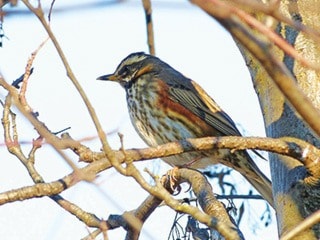The Victoria Natural History Society is conducting its annual Christmas bird count this Saturday (Dec. 20) and is stopping at Fort Rodd Hill National Historic Site to welcome the public along.
Begun in 1958, the bird count sees natural history society members and avian enthusiasts roaming throughout Greater Victoria, identifying and counting as many species as they can. It’s a way to keep tabs on changing populations, migratory patterns and factors that could pose a threat to native ecosystems.
“It’s a good opportunity for the public to learn about what’s in their backyard,” says Bob Campbell, species-at-risk communications officer at the historic site.
Though the bird count has included Fort Rodd Hill in years past, this is the first time the park has formally partnered with the Natural History Society to extend the invitation to volunteers and the public.
Also new this year is the hot chocolate and apple cider offering in the Garry Oak Learning Meadow, as the public gather and are oriented to the count.
“The count is so close to Christmas, it’s a way for us to infuse some cheer into the afternoon,” Campbell says.
And even if no rare birds decide to show their beaks, the meadow itself is a wonder to behold. It’s a one-acre piece of Fort Rodd Hill’s grounds that has been completely restored to a native Garry Oak ecosystem, a process that has taken over 5,000 volunteer hours.
“We were just amazed at how quickly it came back,” he says. Native species like great camus, Douglas aster and native buttercup and strawberry have come up in much greater numbers than expected, transforming the sparse meadow into a colourful, blooming landscape in spring.
Campbell notes that while the blooms might be a few months away, there are still plenty of chances to see and hear much diversity in the ecosystem.
“There’s always opportunities to see birds and animals,” he says, including a resident family of river otters that live down by Fisgard Lighthouse.
Regular public admission fees apply: $3.90 for adults, $3.40 for seniors and $1.90 for children over six.
For more information, contact Fort Rodd Hill National Historic Site at 250-478-5849, or visit the Natural History Society’s website at vicnhs.bc.ca.
acowan@goldstreamgazette.com
